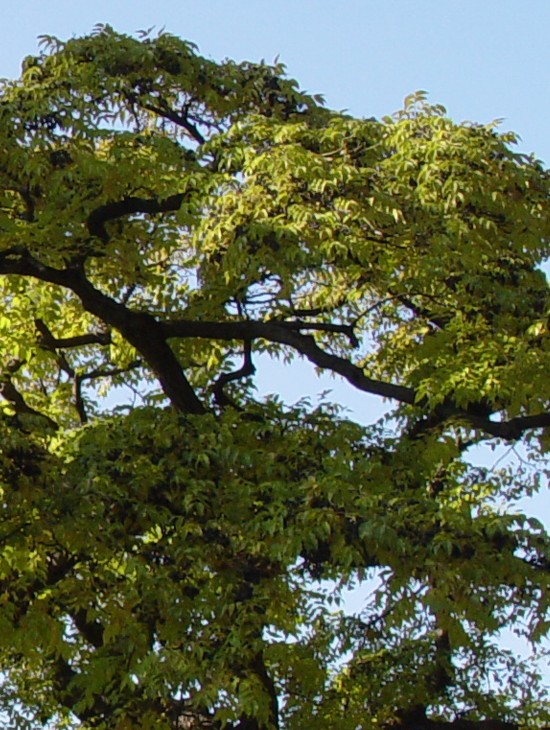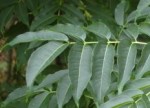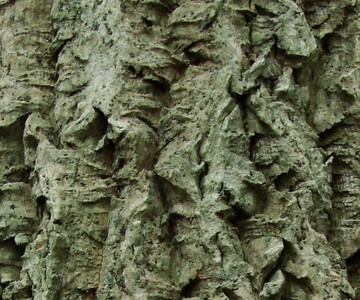 A native of northern China, this cork tree takes its name from the Amur River, the boundary between China and Siberia, and is not related to the true cork tree. It is a moderate sized deciduous tree developing a massive trunk with broad spreading branches and an open rounded crown so that at maturity it resembles a majestic oak. The leaves are glossy, leathery, and dark green in summer, turning deep yellow in the fall. They give off a turpentine aroma when crushed. Inconspicuous male and female flowers appear on different trees in late spring and female trees produce clusters of pea-sized green berries that turn blue-black and shrivel in the autumn. Although the berries are attractive they can be a mess when they fall so male trees are often favored. In the winter the deeply furrowed corky gray-brown bark and the striking silhouette add interest to the garden. The tree prefers moist conditions but once established are fairly drought tolerant. It can be used as specimens or shade trees and are especially valued for their picturesque appearance in the landscape. Young trees transplant easily in spring or fall. Although Amur cork trees are pollution tolerant they are not usually used as street trees because of their low, spreading habit. Unfortunately, the tree has become invasive in some areas.
A native of northern China, this cork tree takes its name from the Amur River, the boundary between China and Siberia, and is not related to the true cork tree. It is a moderate sized deciduous tree developing a massive trunk with broad spreading branches and an open rounded crown so that at maturity it resembles a majestic oak. The leaves are glossy, leathery, and dark green in summer, turning deep yellow in the fall. They give off a turpentine aroma when crushed. Inconspicuous male and female flowers appear on different trees in late spring and female trees produce clusters of pea-sized green berries that turn blue-black and shrivel in the autumn. Although the berries are attractive they can be a mess when they fall so male trees are often favored. In the winter the deeply furrowed corky gray-brown bark and the striking silhouette add interest to the garden. The tree prefers moist conditions but once established are fairly drought tolerant. It can be used as specimens or shade trees and are especially valued for their picturesque appearance in the landscape. Young trees transplant easily in spring or fall. Although Amur cork trees are pollution tolerant they are not usually used as street trees because of their low, spreading habit. Unfortunately, the tree has become invasive in some areas.
 Type: Deciduous tree
Type: Deciduous tree
Outstanding Feature: Form; bark
Form: Massive trunk with low spreading branches and open rounded crown
Growth Rate: Medium
 Bloom: Inconspicuous male and female flowers on different trees in late spring
Bloom: Inconspicuous male and female flowers on different trees in late spring
Size: 25-45’ H x 30-60’ W
Light: Full sun
Soil: Average, moist, well-drained, pH 5.5-7.5; tolerates many types of soil
Hardiness: Zones 4-7
Care: Prune in winter
Pests and Diseases: None of significance
Propagation: Seed; root semi-ripe cuttings in midsummer.
Outstanding Selection: ‘Macho’ (male that produces no fruits or mess but can fertilize female flowers).
